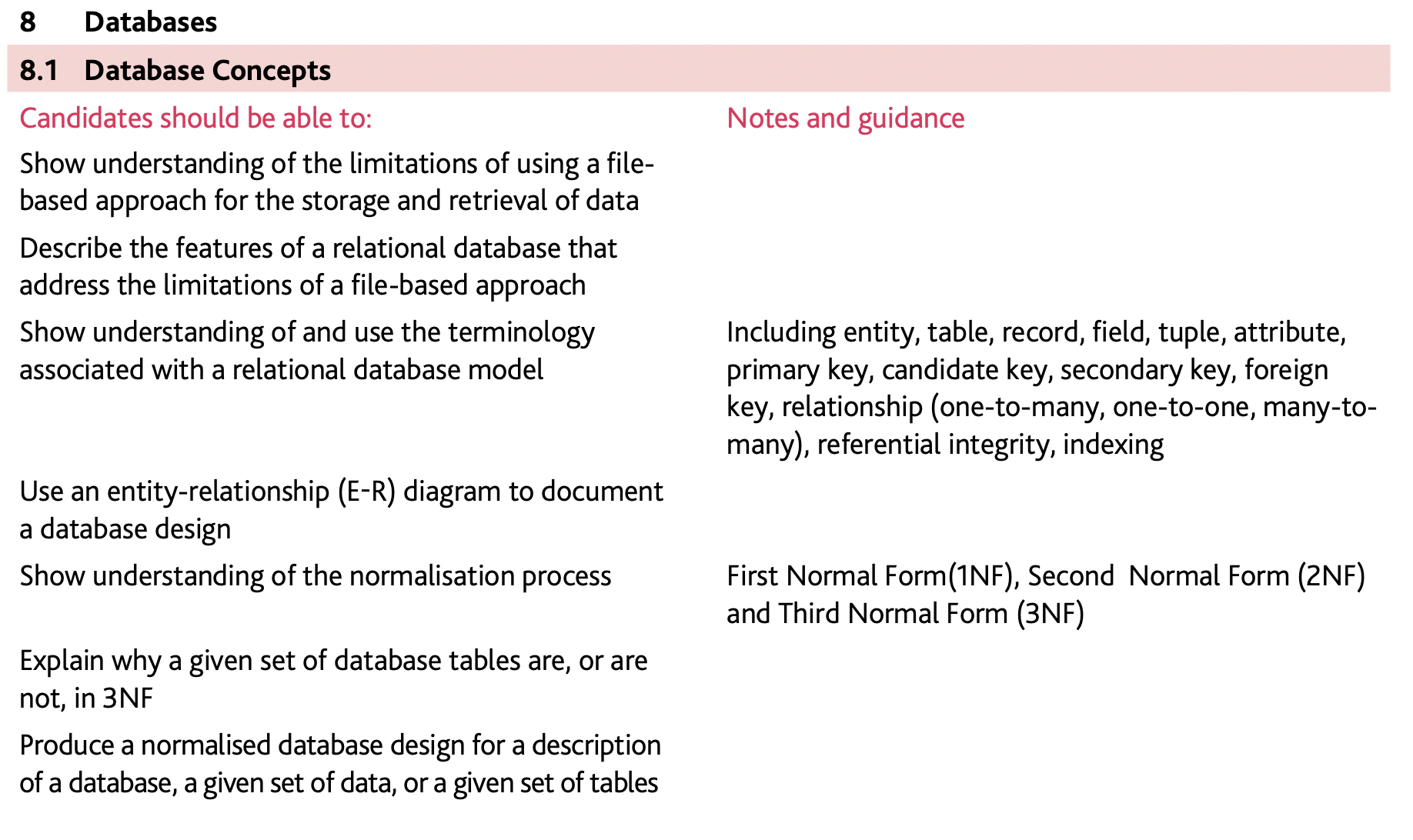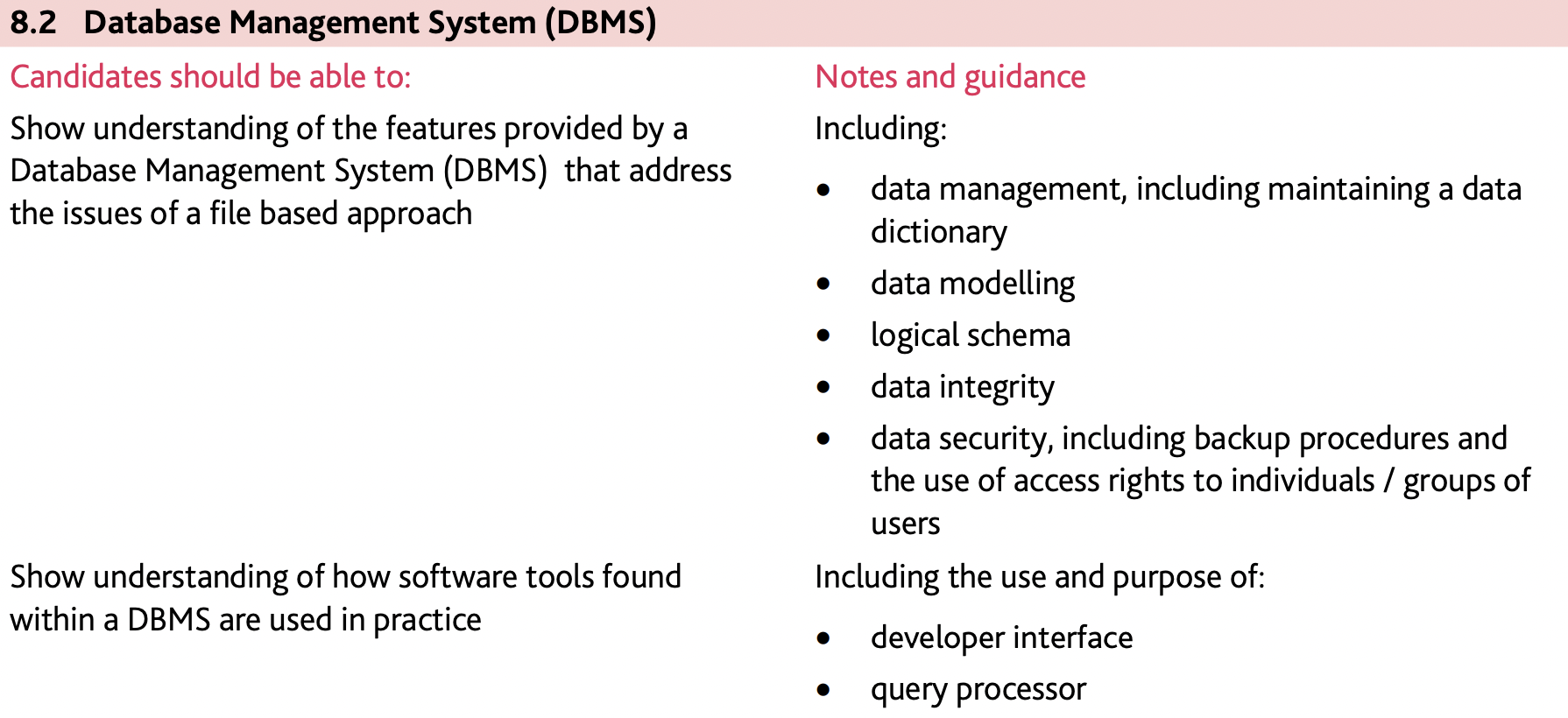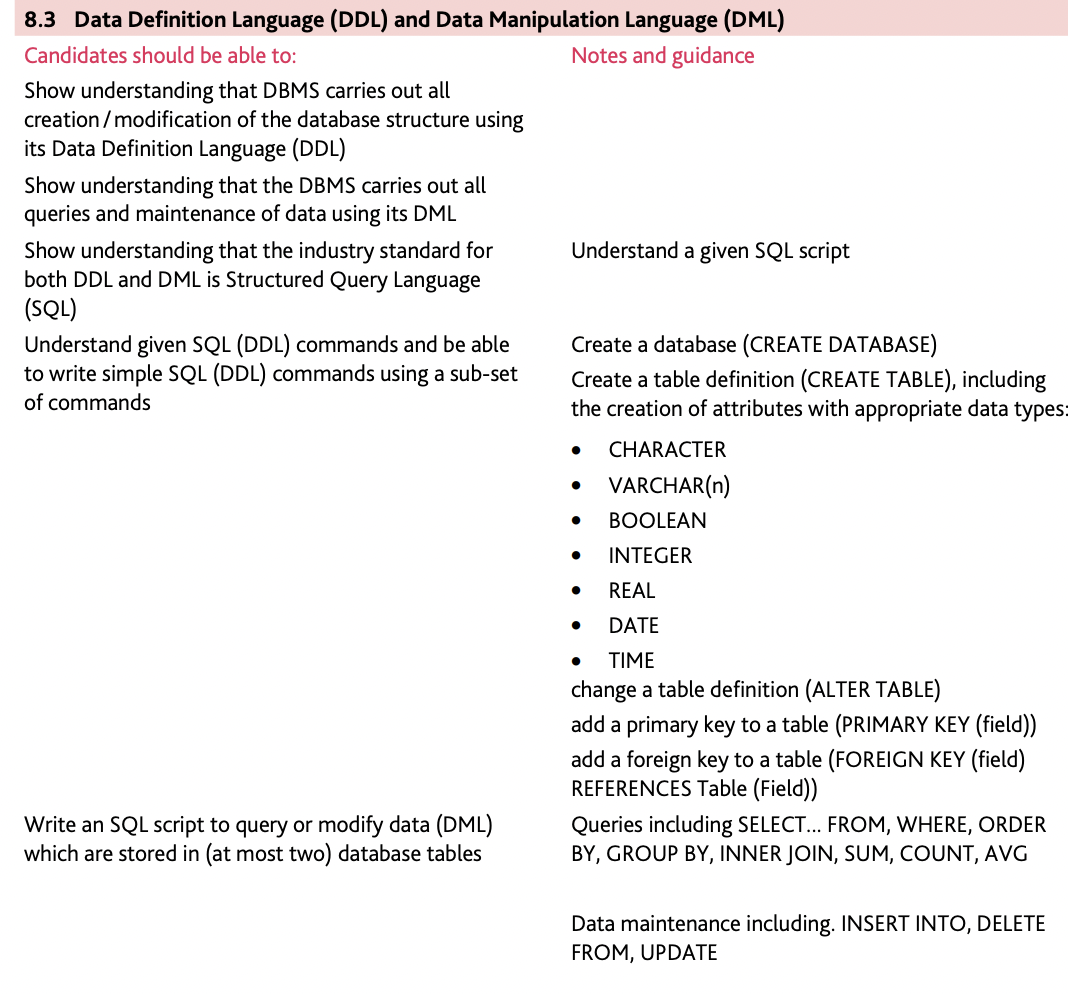Chapter8_Databases

Database Concepts
Limitations of a file-based approach
- Data redundancy - the same data is stored many times
- Program-data dependence - the program that access the data has to be re-written if any changes are made to the structure of the files
- Data dependency - changes to data means changes to programs accessing the data
- Data inconsistency - when data is updated in one place, it is not updated everywhere
- Hard to perform complex queries - a new program has to be written each time
- Lack of data privacy - user views cannot easily be implemented
Features of a relational database
- Multiple tables are linked together
- reduces redundancy
- increases integrity
- data only needs to be updated once
- associated data will be automatically updated
- Program-data independence
- the structure of the data can change and does not affect program
- the structure of programs can change and does not affect data
- the data can be accessed by any appropriate program
- Allows concurrent access to data
- by the use of record locking
- by restricting over-writing changes
- Different user can be given different access rights
- which improves security
- Different users can be given different views of the data
- so data privacy is maintained
- More complex searches and queries can be executed
- Multiple tables are linked together
Entity
Anything that can have data stored about it (e.g. a person, a place)
Table
A group of similar data, in a database, with rows for each instance of an entity and columns for each attribute
Record
A row in a table in a database
Field
A column in a table in a database
Tuple
One instance of an entity, which is represented by a row in a table
Attribute
A column in a table = field
Primary key
Unique identifier (an attribute) for a table, a special case of candidate keys
Candidate key
An attribute of smallest set of attributes in a table where no tuple has the same value
Secondary key
A candidate key that is an alternative to the primary key
Foreign key
A set of attributes in one table that refers to the primary key in another table
Relationship
Situation in which one table in a database has a foreign key that refers to a primary key in another table in the database
Referential integrity
Property of a database that does not contain any values of a foreign key that are not matched to the corresponding primary key
Indexing
- Data structure built from one or more columns in a database table
- Helps to efficiently retrieve records from database files
Normalization
- First Normal Form (1NF)
- No repeated groups of attributes
- All attributes should be atomic (single value, non-divisible)
- No duplicate rows
- Second Normal Form (2NF)
- No partial dependencies (some attribute only depends on part of a composite key)
- Third Normal Form (3NF)
- No non-key dependencies
- No transitive dependencies
- First Normal Form (1NF)

Database Management System (DBMS)
Features of DBMS
Data dictionary
- A set of data that contains metadata for a data base
- Table/entity names
- Field/attribute names
- Datatypes
- Validation
- Primary keys
- Used by managers of the database
- Maps logical database to physical storage
Data modeling
The analysis and definition of the data structure required in a database to produce a data model
Logical schema
Schema refers to a data model for a specific database that is independent of the DBMS used
Logical:
- Describes how the relationships will be implemented in the logical structure
- Defines all the logical constraints that need to be applied on the data stored
- Defines tables, views, and integrity constraints
Tools in DBMS
- Developer interface
- Set up forms for the input of student data
- Add objects to a form to make data input easier
- Design a report for the output of student marks
- Add a menu to select options for different actions
- To create user friendly features
- To create interactive features
- To create outputs
- Create table
- Create form
- Set up query
- Set up relationships between table
- Query processor
- To create SQL queries
- To search for data that meets the set criteria
- To perform calculation on extracted data
- Developer interface
